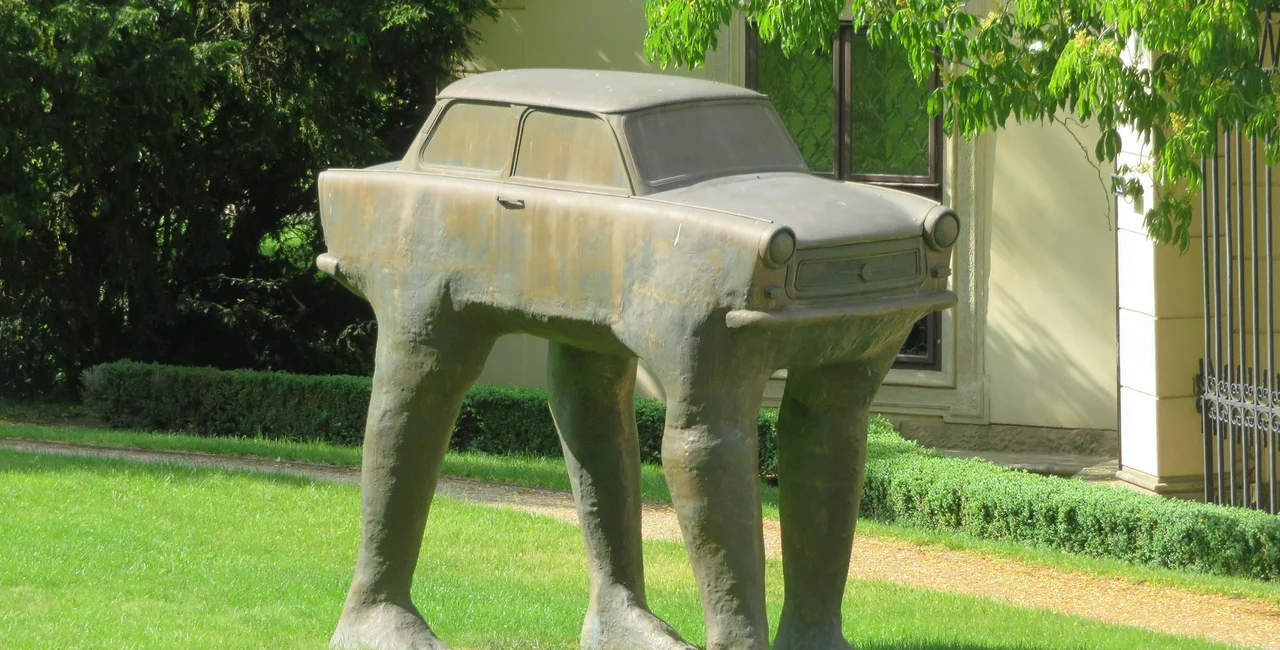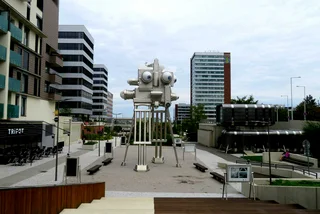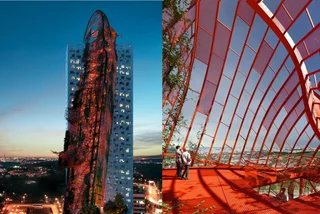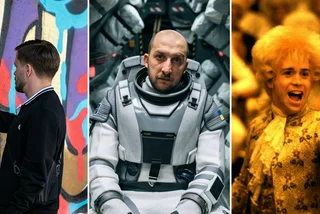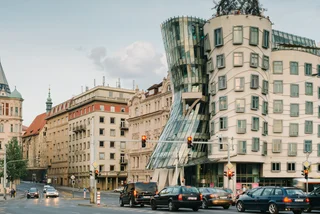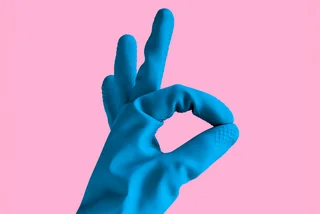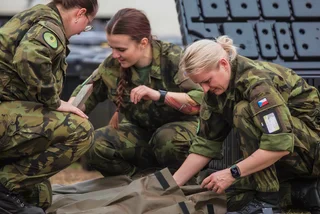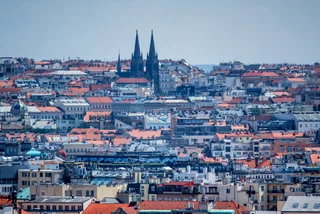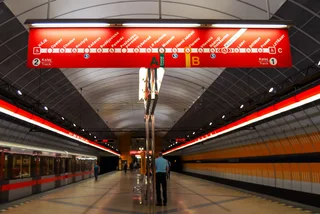David Černý’s three-ton bronze “Quo Vadis,” a sculpture of a four-legged Trabant car, will be in front of the Liberec Town Hall in Northern Bohemia for about a year. It has already been put in place and will be unveiled on Oct. 5 at 4 pm.
The 1991 sculpture is one of Černý’s earliest works. Two almost identical castings were made. Along with the “Pink Tank,” a Soviet tank on public display that Černý modified without permission, “Quo Vadis” helped bring Černý to international attention.
The sculpture symbolizes the autumn of 1989 when thousands of East German residents made their way out of the Eastern bloc via the West German Embassy, located in Palais Lobkowicz on Vlašská Street in Prague.
The palace is now the German Embassy, and since 2001, one of the two copies has been located in the embassy garden. It can only be seen from a distance, through the back fence of the embassy, as the garden is not open to the public save for special occasions.
Back in 1989, hundreds of East German–made Trabants were left in the streets of Prague after their owners fled. The legs of the sculpture symbolize the escaping East Germans.
Liberec has borrowed the version that was exhibited last year in front of the Parliament Building in Potsdam, Germany, to commemorate the 30th anniversary of the reunification of Germany.
Moving the sculpture from Germany and installing it in Liberec was fairly simple, as the casting was done in one piece. Some of Černý’s sculptures have hundred of pieces as well as moving parts, which makes handling more difficult.
Jitka Mrázková selects the statues for display at Liberec Town Hall, located at náměstí Dr. Edvarda Beneše. She managed to get the statue due to her personal connection to the artist. “I asked him if he had anything and he suggested this. It's so iconic,” she told the Czech News Agency (ČTK).
Černý made the sculpture with money he borrowed from his father. He used the money from its sale of the first casting to buy himself a new car.
Transportation has been a theme across Černý’s career, with one of his most recent works being a wriggling Porsche car on a pin called “Beetle” (Brouk). For the 2012 London Olympics, he created a double-decker bus doing push-ups called “London Booster.”
He is perhaps best-known now, though, for his “Babies” (Miminka), which adorn the Žižkov Television Tower. They were replaced with more durable copies in 2019.
Since 2005, sculptures by various Czech artists have been placed at the Liberec Town Hall, normally for a year but some have been there longer. The idea is to use art to attract tourists to Liberec, which is a bit off of the tourist’s radar despite several attractions including winter sports, a famous zoo, and the Ještěd Tower – a UFO-shaped hilltop building and broadcasting tower from the 1960s. The town hall also made an appearance in “Spider-Man: Far From Home.”
“Chair” by sculptor Magdalena Jetelová was the first sculpture to be put in the space in front of the town hall. A sculpture of three cats by the Liberec artist Martina Klouzová-Niubo, put in place in September 2010, was there the longest, for three years.
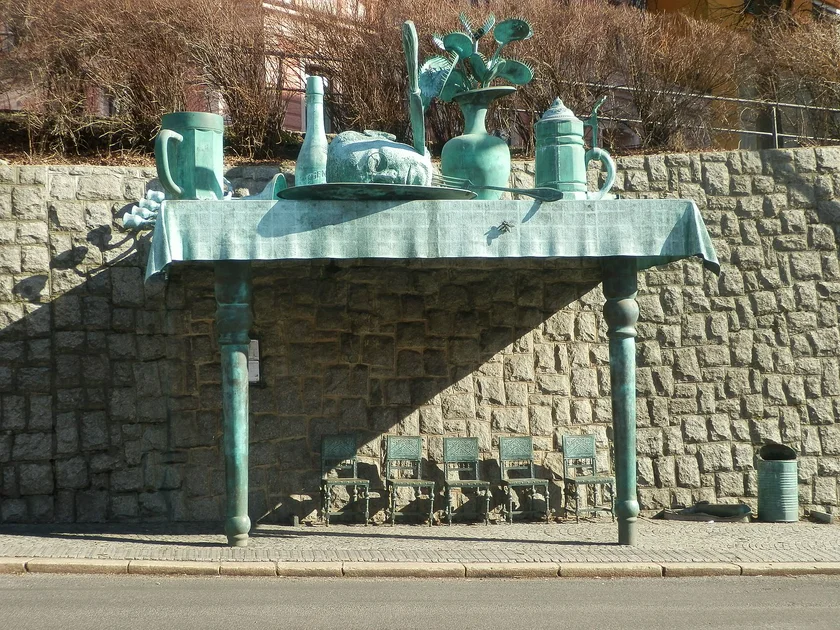
Immediately preceding “Quo Vadis,” a four-meter glass and iron installation called “Sublima” by Jiří Pačinek was in the square in front of the town hall.
There is another work by Černý on permanent display in Liberec, not far from the town hall. “Stop” (Zastávka), also called “Feast of Giants” (Hostina obrů), was installed in 2005.
The metal bus stop covering is decorated with a giant German beer mug, a knocked-over menorah, a Czech vase, a carnivorous plant from the local botanical garden, and a head on a plate. It is meant as a reflection on local history.












 Reading time: 3 minutes
Reading time: 3 minutes 